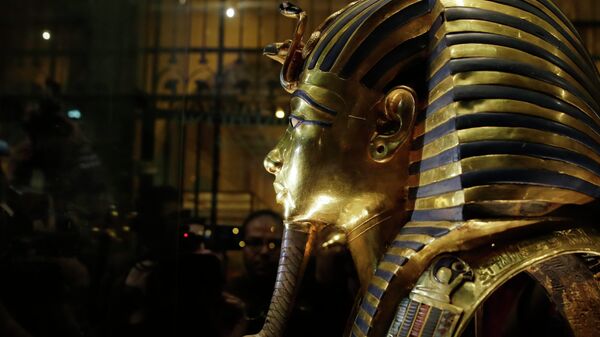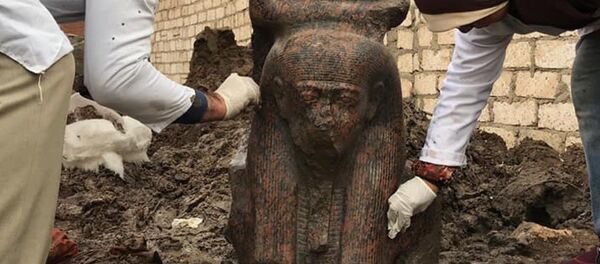It seems that a team of intrepid archaeologists has stumbled upon a previously undiscovered mining operation used to supply gold for the burial of the legendary pharaoh Tutankhamun in the Valley of the Kings thanks to a discovery they made as they set off along the east coast of the River Nile into the Sahara desert, the Daily Express reports citing a Channel 4 series called “Secrets of Egypt's Valley of the Kings”.
According to the newspaper, French gold expert Thomas Forshee and British archaeologist John Ward made their breakthrough when they came across an ancient temple that was built next to one of the wells the miners of old used to cross the Sahara desert.
“The texts engraved on these walls reveal clues about the ancient gold miners and where they were heading. It shows that workers built a network of wells and rest stops stretching across the desert”, the series’ narrator explained. “Each a day's walk from the last, the wells allowed the miners to safely cross and explore the barren wilderness. The wells lead towards the mines and the areas where the miners worked and lived”.
The duo of scholars then spent about five hours trekking across the desert while following that improvised “ancient treasure map”, eventually coming across an ancient mining site which still contained the tools used by its long-dead occupants to crush quartz rocks in order to extract the gold contained within.
"You have to imagine how much pain it takes just to break a single piece of quartz”, Forshee mused. “Doing that all day long, in the sun, pounding and pounding and grinding and grinding for years".
As the series further explains, the ancient miners used to cut shafts up to 10 metres deep in search of quartz rock that contained gold, and apparently it would take about a week for a crew of about 20 people to “process enough stone to make just a spoonful of gold”.
And now, it seems that the desert’s isolation and arid climate have helped preserve these relics of the past so that scholars were able to reconstruct this tale.




